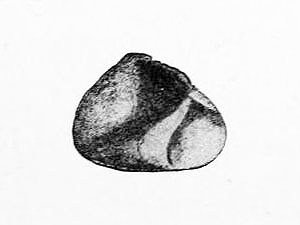Wailua Orobophana Snail (Orobophana berniceia ssp.)
This supposed geographical race, or subspecies of the Limahuli Orobophana Snail (Orobophana berniceira(Pilsbry & Cooke)) is known from several shells that were found south of the Wailua River at the western coast of Kaua’i, Hawaiian Islands.
These shells were nearly all of equal size and in average reached sizes of about 0,27 cm in height and 0,3 cm in diameter. [1]
***
The Wailua Orobophana Snail, whatever its taxonomic status might be, is clearly extinct now.
*********************
References:
[1] Norine W. Yeung; Kenneth A. Hayes: Biodiversity and extinction of Hawaiian land snails: how many are left now and what must we do to conserve them – a reply to. Integrative and Comparative Biology 58(6): 1157-1169. 2018
*********************
edited: 18.05.2019


